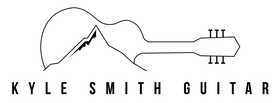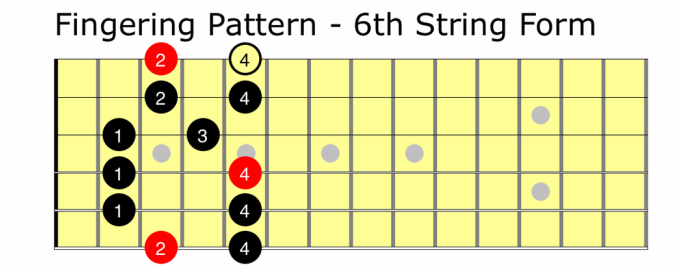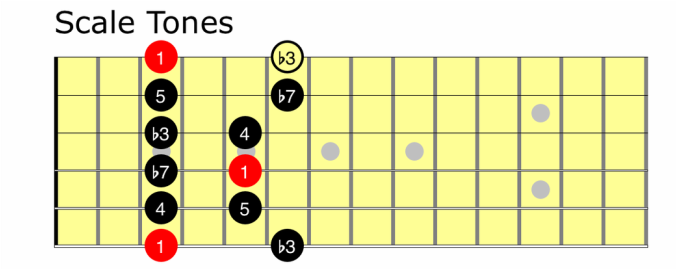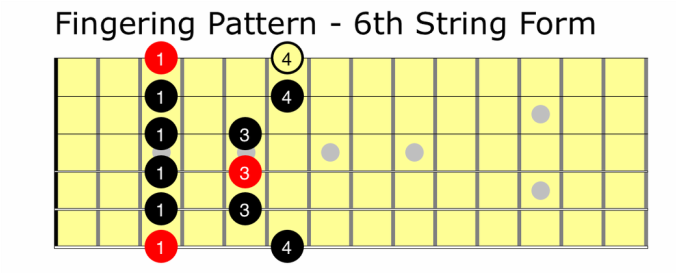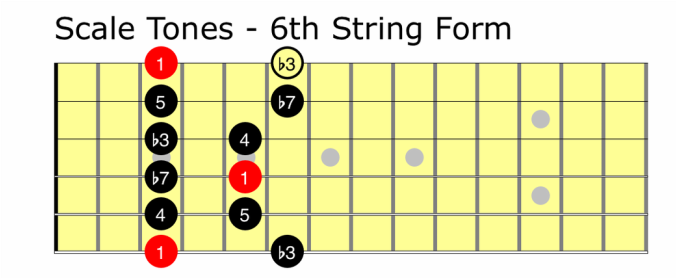Why should you learn your pentatonic scales?
Pentatonic scales are an important part of learning to improvise when you play jazz guitar. If you've been looking for jazz guitar lessons online, you have probably found a ton of different (and complicated looking) lessons on pentatonic scales.
Luckily if you use the right approach, you will be able to use pentatonic scales as a foundation for improvising in your jazz guitar playing. These patterns will also provide a stepping stone to easily learning other scale patterns, so be sure to put the time in to learn pentatonic scales now! Why do people struggle with pentatonic scales?
One problem I encounter regularly with students is that they don't really understand how pentatonic scales work, or how to use them to improve their guitar playing. Even students who seem to know the fingering patterns have difficulty putting them to use when they are improvising.
The issue is that the way most people learn their pentatonic scales doesn't give them a clear way to apply them to songs, differentiate between major and minor, or play in all 12 keys. Luckily there is a simple solution that will help you learn your major and minor pentatonic scales and immediately apply them to your jazz guitar playing. How will pentatonic scales improve your guitar playing?
No matter what style of music you want to play, it is going to be important for you to understand how to use pentatonic scales. You can find these sounds in a wide variety of music from different cultures around the world.
With a solid understanding of the pentatonic scales you will be able to use them to improvise when playing jazz guitar, and it will be easier for you to explore playing in other styles as well. Not only are pentatonic scales an important tool for jazz guitar improvisation, the finger patterns used in your major and minor pentatonic scales will also provide you with a framework that you can build other scales and modes upon. When you are comfortable with your pentatonic scales, it will be an easy step to start playing the major and natural minor scales. What will this lesson cover?
In this lesson you will learn:
What are pentatonic scales?
A pentatonic scale is a group of 5 notes. They are very useful for playing solos and melodies in jazz, blues, rock, country, and other styles of popular music. Because pentatonic scales are simple to play, you will be able to learn them relatively quickly and apply them in your guitar playing.
Pentatonic scales will provide you with a foundation for improvising on the guitar in any key. They can be the bulk of your improvisational language in many rock, blues, and country styles. If you are learning jazz guitar, pentatonic scales are an important building block for your theory knowledge and technical development. The Major Pentatonic Scale: 6th String Form
The major pentatonic scale can be used to solo in major keys. The major pentatonic scale is made up of the following intervals:
In the 6th string form shown below, The sequence repeats itself so that you get just over 2 octaves.
In order to get the finger pattern into your muscle memory, there are 4 steps to take. These steps will ensure that you get the scale under your fingers in the shortest time possible.
Practice slowly and follow the following practice examples: Example 1:Example 2:Example 3:Example 4:Using scale degrees for ear training
If you are ready to take your playing a step further, start saying or singing the scale tones as you play. This will help you develop your ears at the same time your are building your technique. You will be learning how the notes of the scale sound in relation to the key.
Minor Pentatonic Scale
The minor pentatonic scale can be used to solo in minor keys, and can also be used to add some extra color when you are playing in major keys (especially if you are playing the blues). The minor pentatonic scale is made up of the following intervals:
In the 6th string form shown below, The sequence repeats itself so that you get just over 2 octaves.
In order to get the finger pattern into your muscle memory, there are 4 steps to take. These steps will ensure that you get the scale under your fingers in the shortest time possible.
Practice slowly and follow the following practice examples: Example 1:Example 2:Example 3:Example 4:Using scale degrees for ear training
Once you are comfortable with the finger pattern, try practicing the scale all over the guitar neck. My favorite approach is to start with the first finger at the first fret, and move up the neck one fret at a time.
Once you are ready to take your playing a step further, start saying or singing the scale tones as you play. This will help you develop your ears at the same time your are building your technique. You will be learning how the notes of the scale sound in relation to the key. Next steps
By now, you have learned a little bit about why pentatonic scales are an important skill for you to master, and how they can improve your guitar playing. We have covered 2 fingerings for the pentatonic scales for guitar starting on the 6th string:
If you are just getting started playing jazz guitar, these scales are a great place to get started with improvising on the blues, and some jazz standards. If you are more interested in other styles of music, I hope you still found some helpful information and exercises to help you improve your guitar playing. If you found this lesson useful, please sign up for my email list using the form below - you will get updates and lessons like this one in your email and it's a great way to keep in touch. If you are ready to take your playing to the next level, click here to contact me and get started with guitar lessons.
0 Comments
Your comment will be posted after it is approved.
Leave a Reply. |
